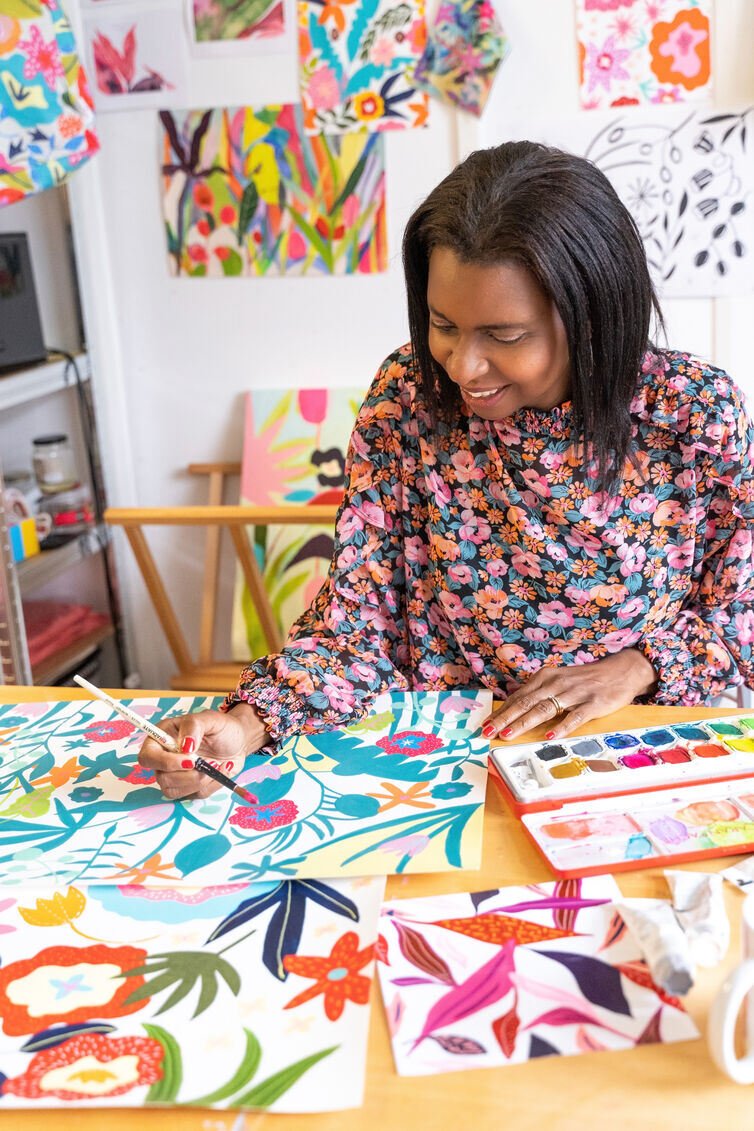What is Digital Fabric Printing?
Here at Jennie Fynn, all the fabrics for my tote bags, cosmetic bags and cross body bags are created using digital fabric printing.
Digital fabric printing is a relatively new printing process compared to the old methods of woodblock printing, screen printing and engraved roller printing.
It reproduces any design or image you want to create in as many colours and tones as you wish, at any scale.This method is perfect to showcase my colourful fabrics showing different colour shades and brushstrokes.
So, what is digital fabric printing?

To put it simply, digital fabric printing involves printing digital files of artwork, colours or patterns onto fabric. The printing process works very similar to your home desktop inkjet printer, but on a large scale.
The original image can be created on paper or a photograph or solely using a computer software program such as Photoshop or Illustrator. All my fabric designs start out as paintings on paper which I then scan into my computer and manipulate with Photoshop to produce a digital file. You can learn more about how I design my colourful fabrics in this blog post.

The digital file is then sent to a large-scale printing machine that is set up with specially coated fabric. The printer then prints the digital design onto the fabric in a similar way to how you would print onto a piece of paper using your home printer. I currently use Prinfab to print all my fabrics as I find the colour quality and service exceptionally good.
The two main digital fabric printing methods
Dye-sublimation is a heat transfer method that enables dyes to penetrate the fabric fibres. This method is very effective for polyester fabrics resulting in vibrant, colourfast designs.
Direct to fabric involves the direct application of inks onto fabric using inkjet technology. This is suitable for printing onto natural fibres such as cotton, linen, and silks, resulting in detailed, photographic-quality designs.
The fabrics are then steamed and washed to fix the dyes and inks. Digitally printed fabric will then wash and wear the same as any other fabric.
How sustainable is digital fabric printing?
Digital fabric printing uses water-based dyes and inks that are eco-friendly and don’t contain harmful chemicals, making it an environmentally friendly printing process. The method uses virtually no water, compared to other printing methods.
Designs can be printed on exactly the amount of fabric you need, so it reduces waste and is therefore relatively inexpensive compared to other printing methods.
This method of printing has allowed self-taught designers like myself to print fabrics sustainably in the UK. As the technology continues to improve, higher print speeds and improved inks and dyes have brought about lower costs and wider distribution, enabling affordable mass fabric production.



